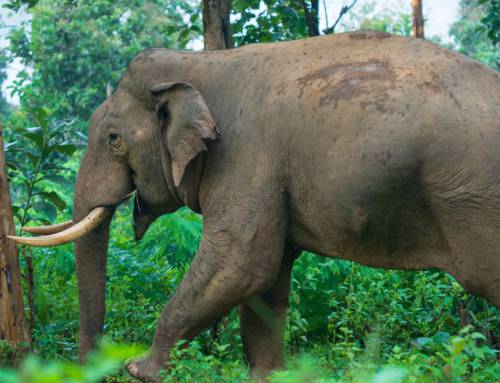Research Article: Shivakumar, S., Carricondo-Sánchez, D., Athreya, V., Odden, M, Dhiman, S. P., Vaidyanathan, S., Karanth, K. K. (2023). Examining leopard attacks: spatio-temporal clustering of human injuries and deaths in Western Himalayas, India. Frontiers in Conservation Science.
Blog Author: Shweta Shivakumar
Key Takeaways:
- This study looks at identifying problem leopard attack patterns to reduce the risk of people living with big cats.
- The author traversed 13,000 kms to survey 317 people who had been attacked by leopards in Himachal Pradesh, India within a 11 year period (2004 – 2015).
- 13% of the attacks were caused by problem leopards and they did not cluster (concentrate) in space and time, showing that a problem leopard either did not last very long, or the attacks were caused by more than just one leopard.
- The authors speculate that attacks were seasonal in nature following people’s activities associated with the changing agricultural seasonal landscape, rather than just one problematic leopard causing attacks.
- Unlike past studies, attacks on people were most likely to occur away from protected areas, and closer to district boundaries in Himachal Pradesh.
It is not a new phenomenon to hear of leopards, lions or tigers living in the same neighbourhoods as people in India or Africa. In the course of living with these large wild animals, people get injured or occasionally, die due to attacks by big cats. These attacks can range from a simple injury (scratches by leopards) to a full blown unprovoked attack. In an unprovoked attack, the leopard displays predatory behaviour towards a person such as biting the neck, dragging the body, etc., without any provocation from the person. Unprovoked attacks are extremely rare occurrences and are often thought to occur as a result of problematic animals. To reduce risk to people living with big cats, there is a need to better understand such problem animal attack patterns.
A collaborative study between Indian and Norwegian researchers looks at identifying attack patterns of leopards in Himachal Pradesh, India. Leopards defend fixed territories of ~91 km sq. and live for 12 years. If leopards were problematic, then areas less than 100 km sq. and within 12 years experienced greater attacks, as compared to areas without problematic animals. This state-wide study involved traversing 13,000 kms to interview people and recording the exact location of attack by leopards.
A total of 287 non-lethal and 30 lethal injuries on people due to leopards could be verified in Himachal Pradesh between 2004 – 2015. Among these, the authors found 44 attacks by leopards displaying signatures of being unprovoked. However, these unprovoked attacks did not cluster (concentration of attacks in space and time) during the study period. This means that unprovoked attacks were few, and occurred randomly in the study area. The authors speculate that the leopards might even have been removed immediately from the area, following one attack on a person.
On the other hand, attacks on people by leopards that were not unprovoked clustered into 12 areas over the 11 year period. Interestingly, the duration of these clusters were within 10 months. This means that within a particular cluster, attacks stopped occurring continuously after 10 months. It is most likely that attacks were seasonal in nature attached to people’s activities associated with the changing agricultural seasonal landscape.
Where in Himachal Pradesh were attacks most likely to occur? Scientists found that most attacks occurred in areas shared with people 12 – 22 km away from any recognized intact forest. This is unusual since we expect areas closer to forests to have more attacks caused by wild animals. They also found that clustered attacks occurred closer to district boundaries of five regions -Hamirpur, Bilaspur, Mandi and Shimla, Kullu. Mitigation strategies, such as awareness programs and stakeholder engagement, could be concentrated in these regions to bolster willingness of people to live with leopards in Himachal Pradesh.
You can access the original article here.
Keywords: Leopards, Human-wildlife interactions, attacks




